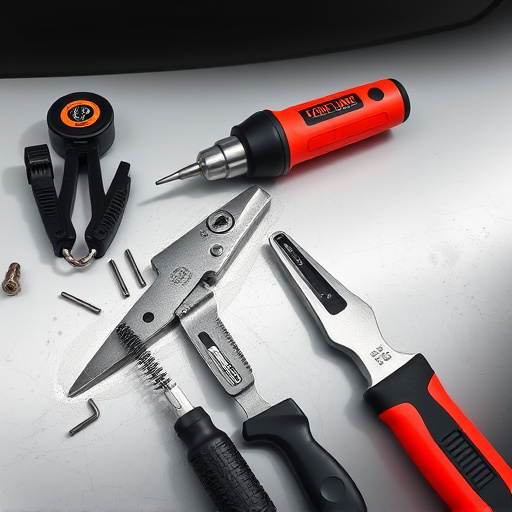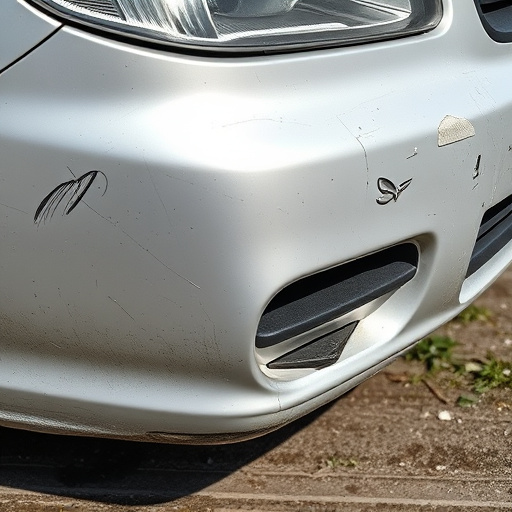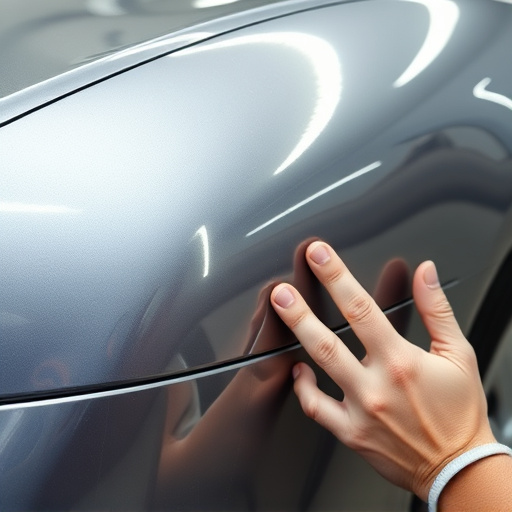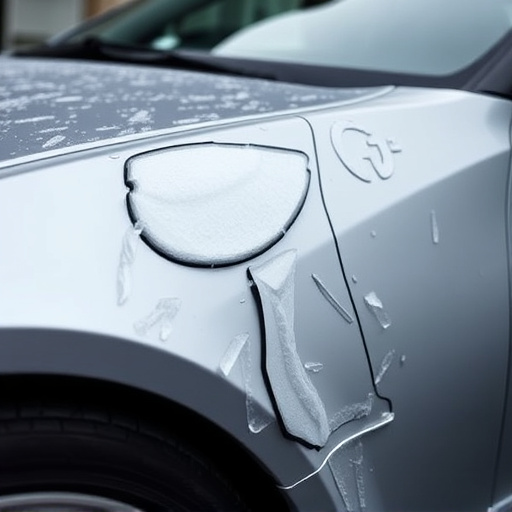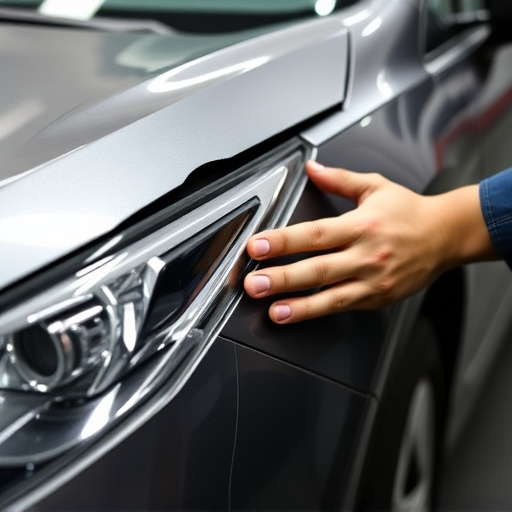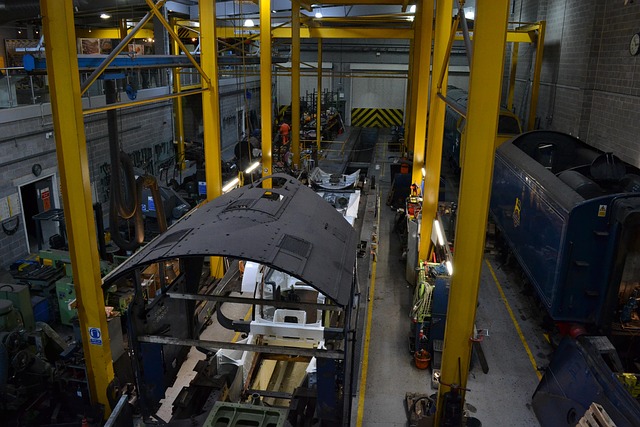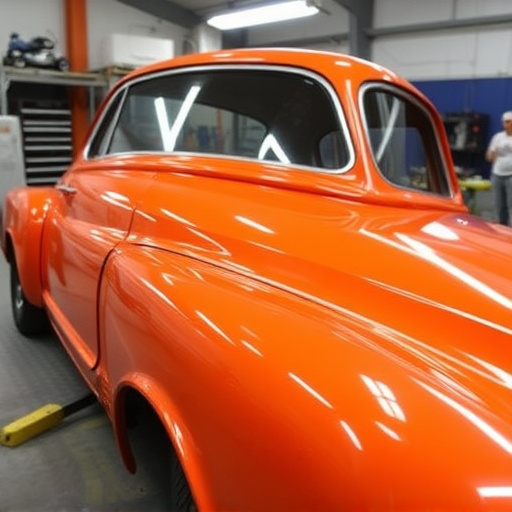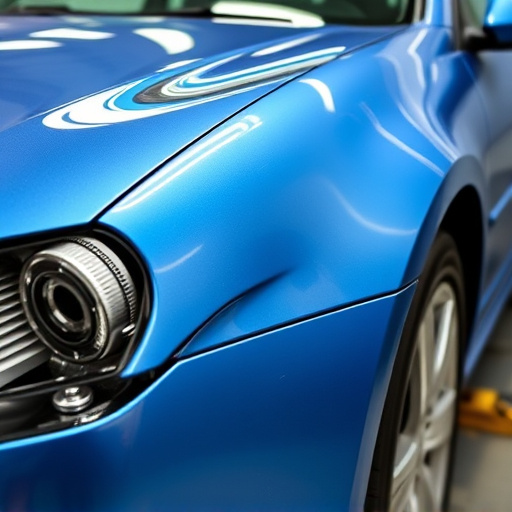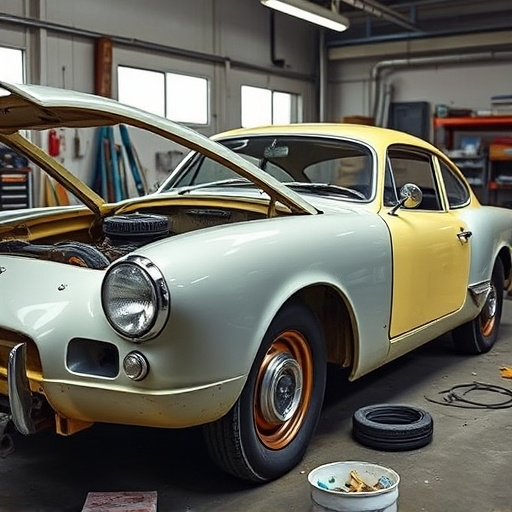The auto body cosmetic repair industry is transitioning to eco-friendly practices with plant-based composites, 3D printing, water-based paints, and recycled materials, reducing environmental harm without sacrificing quality or aesthetics while meeting consumer demand for greener car upkeep. These innovations aim to minimize toxic air pollution and VOC emissions, ensuring a healthier planet and longer-lasting vehicle finishes.
In today’s eco-conscious world, understanding the environmental impact of auto body cosmetic repairs is more vital than ever. This article delves into the sustainability aspects of this industry, exploring the materials used and their effects on the planet. We examine current practices, highlighting the ecological footprint of cosmetic procedures on vehicles. Furthermore, we discuss innovations and future trends that promise to revolutionize eco-friendly auto body cosmetic repair, offering a greener approach for a more sustainable automotive landscape.
- Sustainable Materials Used in Auto Body Repairs
- Environmental Impact of Cosmetic Procedures on Vehicles
- Innovations and Future Trends in Eco-Friendly Auto Body Cosmetic Repair
Sustainable Materials Used in Auto Body Repairs
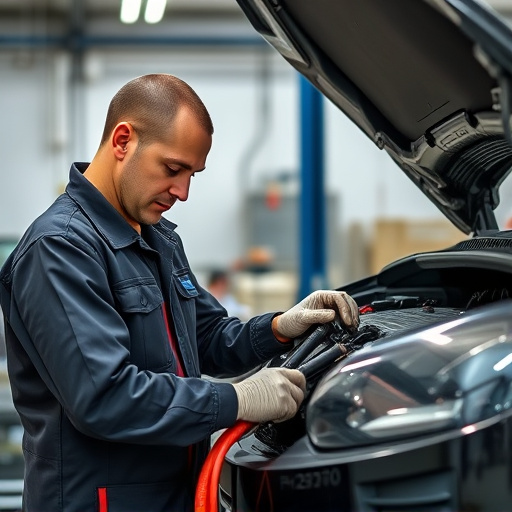
The auto body cosmetic repair industry has embraced sustainability with a shift towards using eco-friendly materials. Traditional components like plastic and metal are being replaced by innovative, recyclable alternatives. For instance, some companies now use plant-based composites, such as bio-plastic derived from agricultural waste, to create durable and aesthetically pleasing car parts. These sustainable materials not only reduce environmental impact but also offer excellent performance, ensuring that vehicles look as good as new while minimizing their carbon footprint.
Additionally, the rise of 3D printing technology has opened doors for precise, on-demand manufacturing of custom auto body components. This reduces waste and allows for the use of lighter, more efficient materials. Furthermore, many repair shops now employ water-based paints and solvents that are less toxic and more easily biodegradable, replacing harmful chemicals that contribute to air pollution. These advancements in materials science and manufacturing processes highlight the industry’s commitment to environmental stewardship while delivering top-notch vehicle restoration and car body restoration services.
Environmental Impact of Cosmetic Procedures on Vehicles
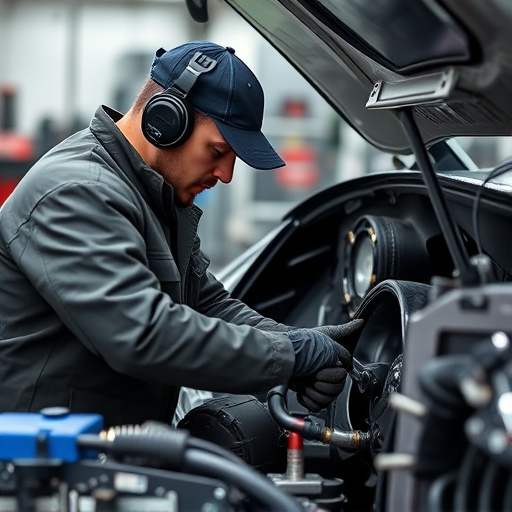
The environmental impact of auto body cosmetic repairs is a growing concern in the automotive industry. Traditional methods often involve the use of harmful chemicals and non-biodegradable materials, leading to significant pollution and contributing to climate change. Fortunately, with increasing awareness, many car bodywork services are now adopting eco-friendly practices. These include switching to water-based paints and solvents, which reduce air pollution and have lower volatile organic compound (VOC) emissions.
Additionally, fender repair and automotive collision repair professionals are utilizing recycled materials and sustainable production techniques wherever possible. This shift towards greener methods not only minimizes the environmental footprint of these services but also aligns with consumer demands for more eco-conscious car upkeep. The move towards sustainability is a positive step forward in ensuring that auto body cosmetic repairs contribute to a healthier planet while preserving the beauty of vehicles.
Innovations and Future Trends in Eco-Friendly Auto Body Cosmetic Repair
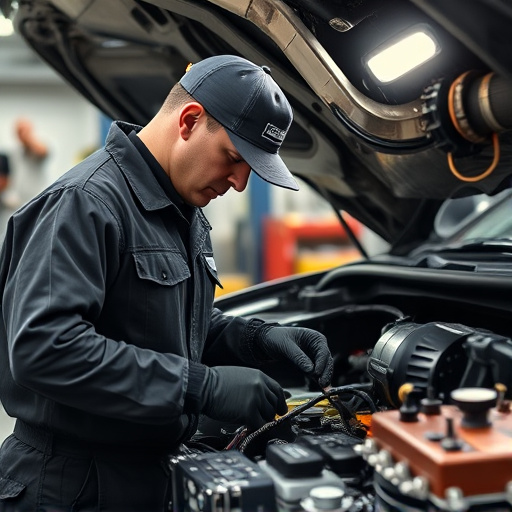
The future of auto body cosmetic repair is looking increasingly green. Innovations such as water-based paints, which reduce VOC (volatile organic compound) emissions, and plant-derived polymers, offering superior durability while minimizing environmental impact, are gaining traction. These advancements not only promote a cleaner environment but also enhance the longevity of vehicle finishes, reducing the need for frequent repairs.
As the demand for eco-conscious car repair services continues to rise, manufacturers are exploring sustainable alternatives in every aspect of automotive repair. For instance, recycled materials are being integrated into body panels and parts, while advanced technologies like 3D printing enable precise repairs with minimal material waste. These trends suggest a promising trajectory for the industry, where Mercedes Benz repair and other automotive repair practices can coexist harmoniously with environmental stewardship.
Today’s auto body cosmetic repair industry is undergoing a significant transformation, adopting eco-friendly practices and materials that minimize environmental impact. Sustainable solutions, from recycled plastics to innovative water-based paints, are revolutionizing how we approach vehicle aesthetics. As consumer demand for greener options grows, the future of auto body cosmetic repair looks promising, with ongoing innovations set to reduce waste, conserve resources, and protect our planet. By choosing eco-conscious repair methods, both consumers and professionals contribute to a more sustainable automotive landscape.

